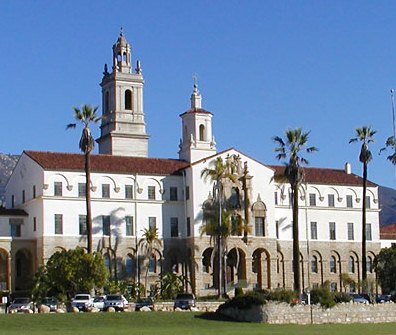As strange as it sounds, the goal of this post is to praise The Los Angeles Times for a page-one story focusing on a single case history linked to the decades of sexual abuse of children and teens by Catholic priests.
At the center of the story are two brothers, Damian and Bob Eckert and the priest, Father Robert Van Handel, who led the community boys choir in which they sang while growing up in Santa Barbara, Calif. Damian was 9 or 10 when he joined and Bob was about 8.
But the key to this remarkable story, other than the painful memories of Damian Eckert, is a once confidential document. This quotable source surfaced in the legal proceedings linked to the wave of sexual-abuse cases in California, including the Van Handel cases and others linked to the now-closed St. Anthony’s Seminary in Santa Barbara.
Simply stated, the document is the 27-page “sexual autobiography” that the priest prepared for a therapist who was attempting to treat him. Thus, the tragically creepy voice of the priest himself — speaking in short, italicized bursts of text — serves as one of the narrators for this story. For example, there is this quote at the start:
There is something about me that is happier when accompanied by a small boy. … Perhaps besides the sexual element, the child in me wants a playmate.
— Father Robert Van Handel
The story focuses on the thoughts and emotions of Damian Eckert the first time he clicked into this document online and faced a series of new revelations about the priest who abused him and created some of the emotional and spiritual booby traps that have exploded at key moments throughout his life. The direct quotes from this therapy diary add a concrete, highly specific spine of facts to the narrative — as opposed to all of those news stories on this painful topic that were forced to lean on vague memories and disputed accusations.
This allows for passages such as this one:
I asked my best friend once if he saw anything “special” in pictures of [naked] children. He said, ‘No, not at all.’ I began to realize that I was different.
The product of an alcoholic, volatile father who served in the military and a scared mother, Van Handel was the third of five children, Eckert read. The priest went to high school in the 1960s at St. Anthony’s, a campus of sandstone facades and grand towers near Old Mission Santa Barbara run by the Franciscan religious order.
Years later, while attending graduate school in Berkeley, he started a boys choir at a local parish, despite his self-professed lack of musical skills. There, Van Handel wrote, he met one of his first victims. He was 7 or 8. Light hair. Blue eyes. His parents were divorcing and grateful for the priest’s interest in their son.
Always this was done under the cover of some “legitimate” touching. [The boy] never seemed to mind, and I wasn’t about to stop on my own.
Around this time, Van Handel wrote, he implied to a Franciscan counselor that he was sexually attracted to boys. The counselor quickly changed the subject.
In 1975, at age 28, Van Handel returned to St. Anthony’s as a teacher and founded the Santa Barbara Boys Choir.
So, besides the quotations from this “sexual autobiography” of a predator priest, what makes this Times story different? What, for me, makes it a better than the average news feature on this tough topic?








